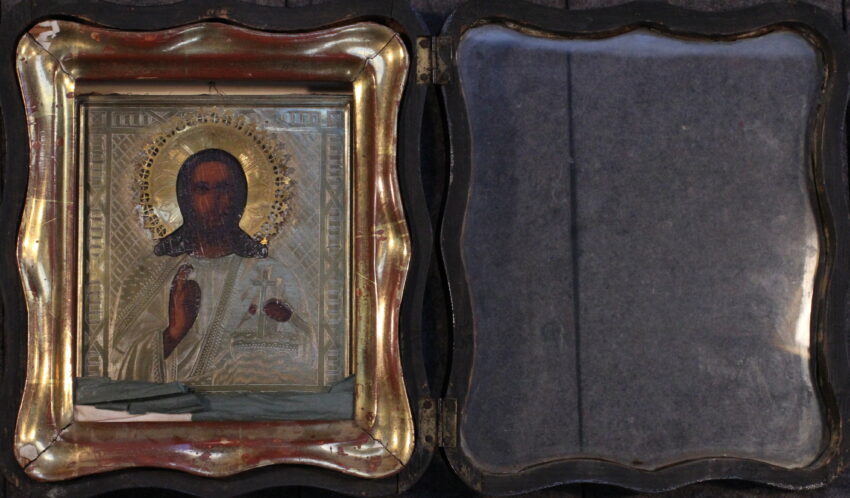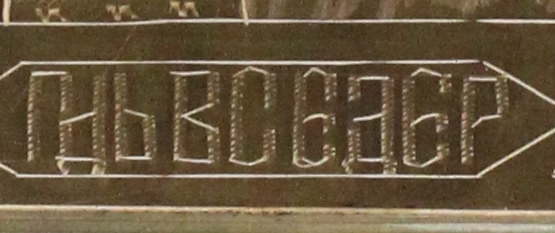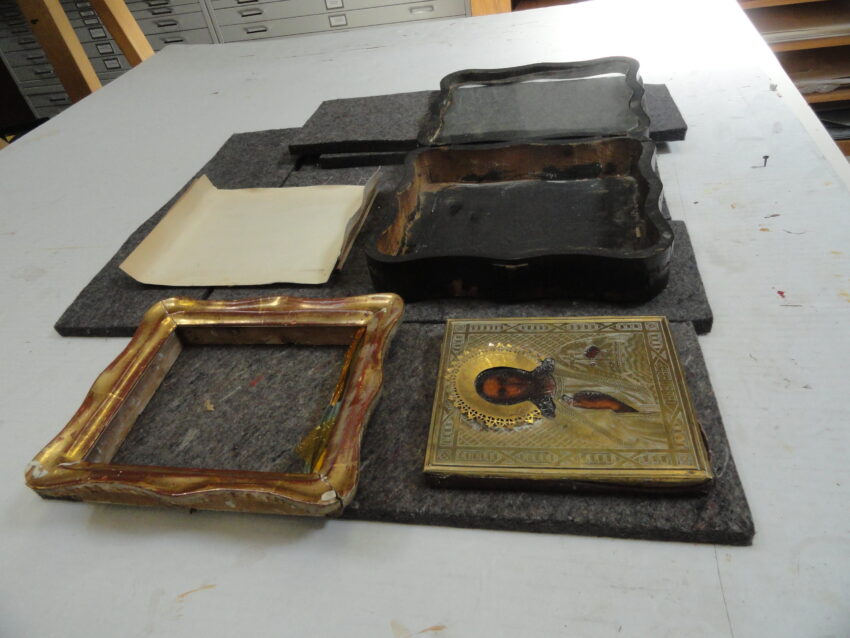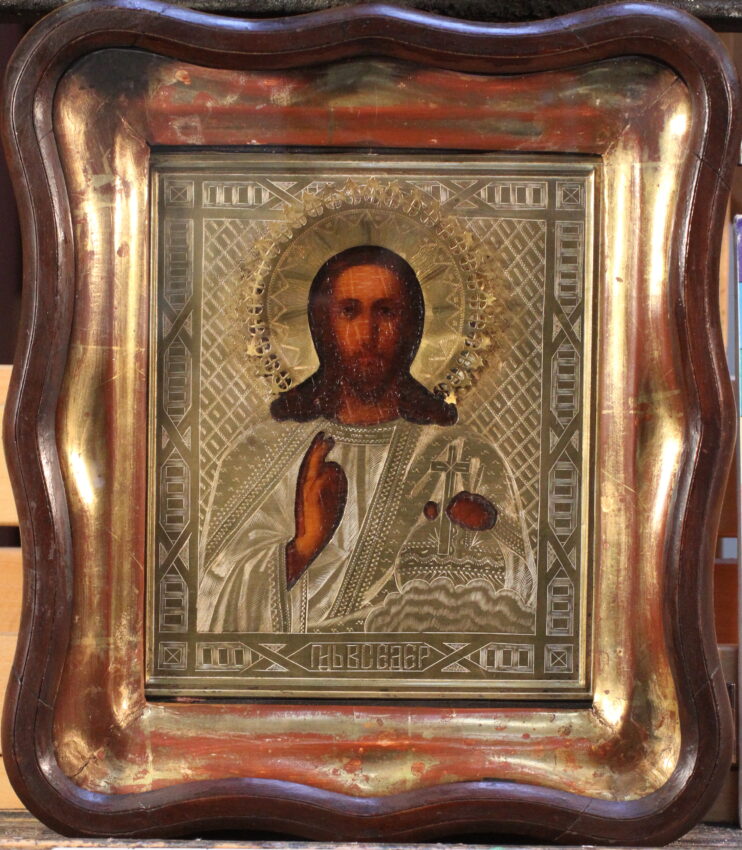An icon can be defined as “a person or thing regarded as a representative symbol or as worthy of veneration”. Jesus Christ is such an icon for the Christian religion. In the Fall of 2020, a project to restore an icon arrived at the McKay Lodge Conservation lab for treatment by Stefan Dedecek, Conservator of Paintings, Polychrome Surfaces, and Murals.
The icon is from Russia, and it is a composite object. The unique object is not only interesting in its appearance, but also its history. It is said to have arrived in San Francisco, California after the Russian October Revolution through a relative, but otherwise its origins are shrouded in mystery.

The icon is set in a gilded frame and housed in a shadow box that conforms to the shape of the frame. It is executed on a wood panel faced with a brass metal sheet. The painted portions of Jesus Christ are minimal, including only the face and the hands. The right hand is in a blessing gesture and the left-hand holds an orb and cross. The metal facing covers approximately 90% of the image. The designs in the metal facing are incised and stamped. There is also an incised inscription in Cyrillic located at the bottom edge and reads as “ГДЬBCЄДЄР”.

The inscription below the Christ was researched. Despite the McKay Lodge Conservation team’s knowledge of the Cyrillic alphabet, the message was not clear. Thankfully the inscription was deciphered with overseas assistance. It was confirmed that the inscription is the Russian contraction of two words from “ГОСПОД ВСЄДАЄР” which can be translated as “God Almighty”.
After performing art historical and material research, Conservator Dedecek then conducted a condition assessment before he could restore the icon. The examination required some disassembly.

The painted sections of the Russian icon are executed in thick resinous paint. Painted areas had discolored with age along with an accumulation of dirt on the overall surface. There was also corrosion on the metal faceplate, and the box and frame had losses and other repairs.
To restore the icon, the conservation treatment would be straightforward to stabilize the unique object as well as to improve its overall appearance. Soiling was reduced from the different surfaces with various mixtures, revitalizing the underlying colors, but not removing the age value of the icon. Losses were filled and/or retouched on the icon, frame, and shadow box as needed.

As a final step for the restoration of the Russian icon, the existing glass was replaced with a museum acrylic glazing made by TruVue, and spacers were added so that the icon fit better into the frame.
After treatment, the Russian icon might not appear all that different. Unless the object or work of art requires it, the least invasive treatment to improve the structural integrity and return an artwork to an appearance intended by the artist is the foremost approach for art conservators. Conservator Dedecek is certainly no exception, treating works of art from large scale murals to modern and contemporary works to Old Master paintings and icons with re-treatable methods and archival materials.
If you want to learn more about Russian Icons, there are countless publications, or visit the Museum of Russian Icons in Clinton, Massachusetts either online or in-person.
